Best Squier guitars 2025: Stratocasters, Telecasters, Jaguars and more for the budget-conscious player
From budget Teles, to vintage-spec’d Strats, I look at the best Squiers available today
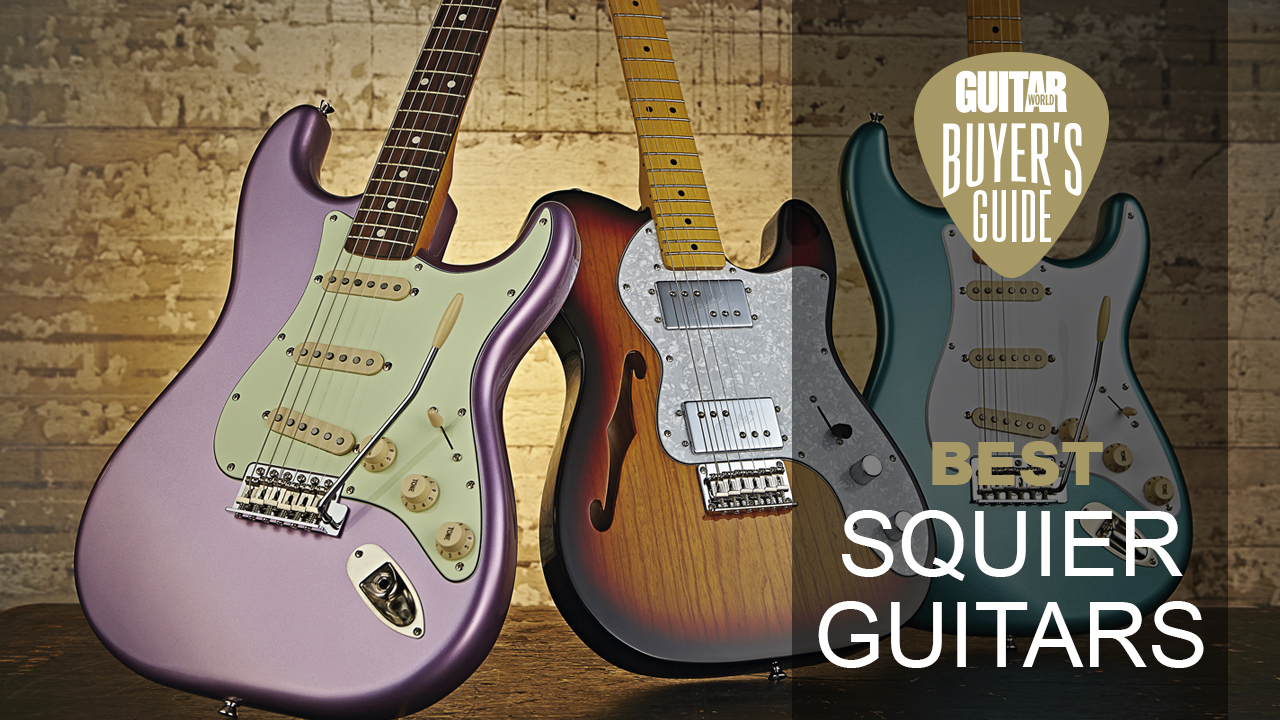
Squier might be Fender’s more affordable offshoot, but the best Squier guitars are far from cheap imitations. Sure, there are budget-friendly series – take the Squier Sonic range, for example. These sub-$200 guitars get Stratocasters, Telecasters and Jazzmasters into the hands of the next generation.
But it is as you move through the ranks, from the popular Affinity series to the experimental Paranormal range, and up to the Classic Vibe and Anniversary models, that you see how seriously Squier should be taken.
It is this broad appeal and accessibility that has earned Squier a dedicated following of its own. Whether it is a local punk guitarist hammering a battered Affinity Tele or pros like Steven Rothery and J Mascis taking them onstage, Squier has proven itself a genuine contender when it comes to affordable, reliable guitars, whether you are a beginner or a seasoned gigging player.
Myself and the Guitar World review team have tested a ton of Squier models over the years World, and we are in the perfect spot to bring you the best of the bunch.
But before we get the list under way, I'll give you my top pick in advance - and I've gone for a fantastic budget option in the shape of the the Squier Sonic Stratocaster HT. Not only is it affordable, but it's comfortable to play and a great investment if you're just starting out on your guitar journey.
Below, you'll find 10 more Squier guitars that myself and the Guitar World team think are worth your time, and for more information, head down to the FAQ section.
On the hunt for guitar gear savings this Black Friday? Shop our handpicked selection of the best Black Friday guitar deals and Black Friday Fender deals.
Top picks
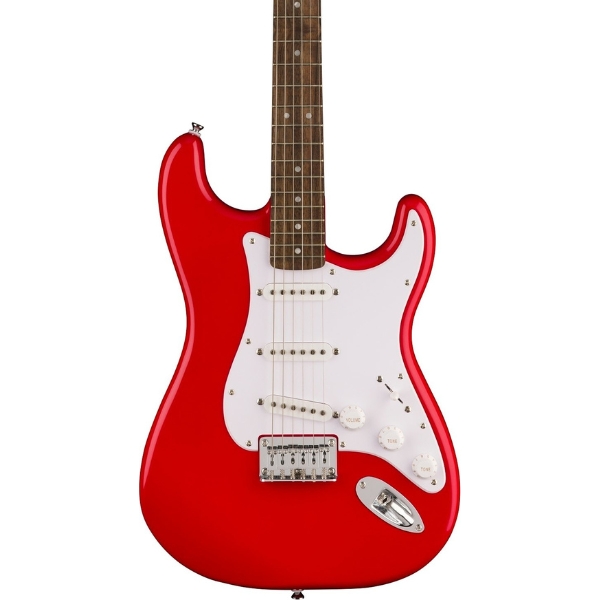
If you need a great playing guitar on a budget, the Squier Sonic Stratocaster HT is our top choice. Great for beginners, it packs robust build quality with classic Strat tones in a package that only just sits above the $/£100 mark.
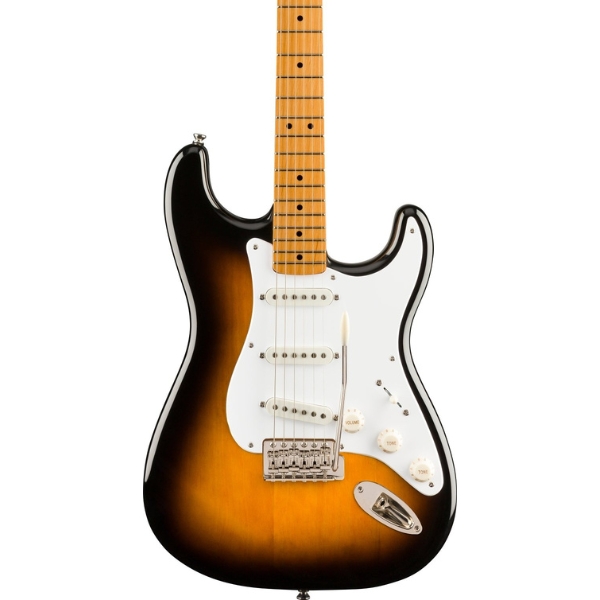
The Squier Classic Vibe ’50s Strat gives you a vintage look, with the classic Strat sound that we know and love. The pickups sound great and it’s built to an excellent standard, making it a great, intermediate-level guitar.
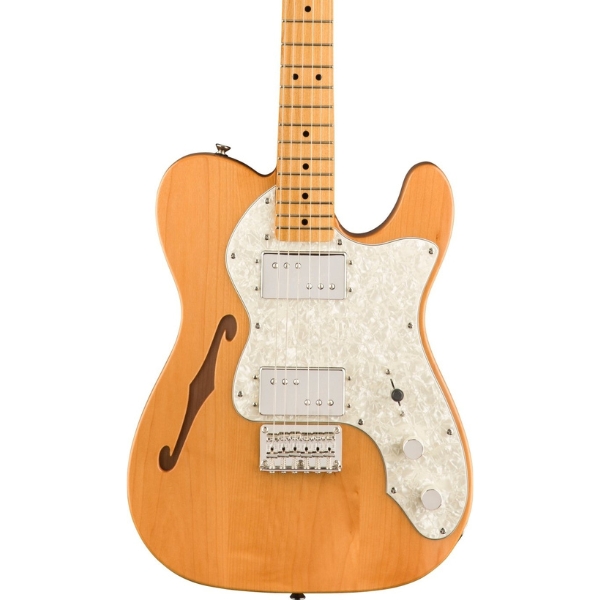
Amongst the most versatile of guitars out there, the Squier Classic Vibe ‘70s Telecaster Thinline adds an extra touch of tone with its semi-hollow design. Combined with two powerful humbuckers, it's our favorite Squier Tele.
Best budget option
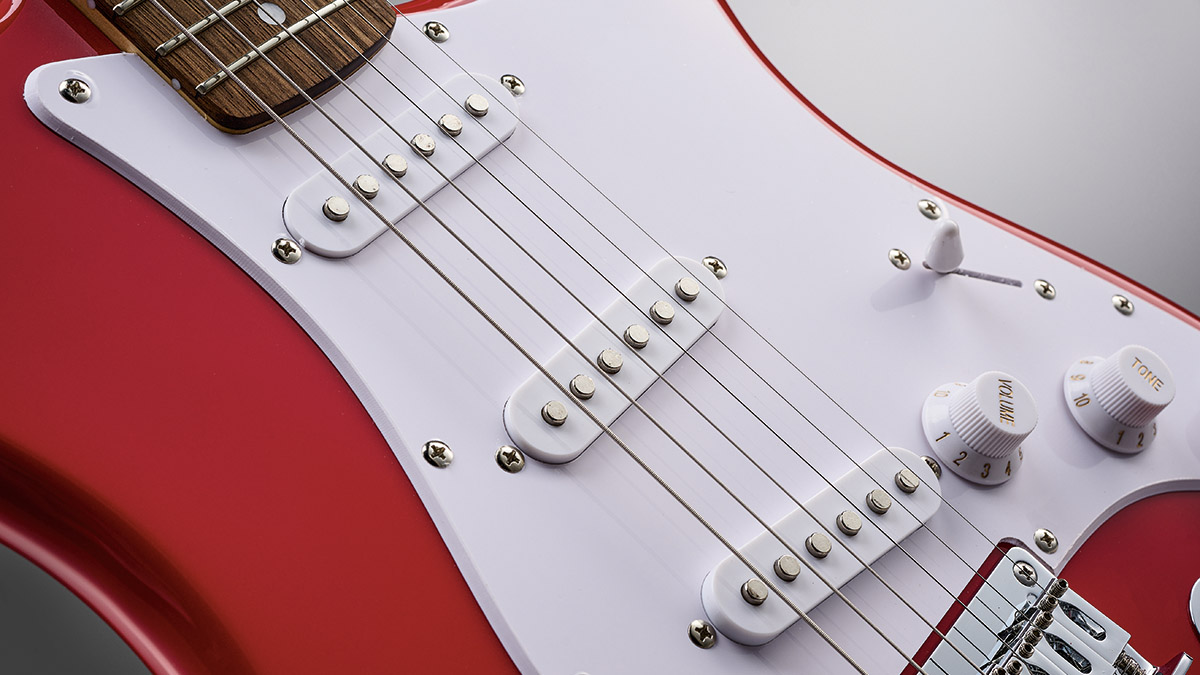
Specifications
Reasons to buy
Reasons to avoid
🔁 If you're starting out and need a straight-shooting, incredible value electric guitar with reassuring tuning stability and a versatile pickup configuration, the Sonic Stratocaster HT should be your go-to option.
✅ Buy if you're a beginner needing something dependable: The Sonic Strat HT is arguably the most consistent entry-level guitar on the market, a brilliant launchpad for any player.
❌ Don’t buy if you're keen to experiment with a tremolo arm: The hardtail bridge gives excellent tuning stability, but if you are chasing David Gilmour-style whammy bar action, you'll need the tremolo-bridge option.
Build: ★★★★½
Playability: ★★★★½
Sound: ★★★★½
Overall: ★★★★½
Launched in 2023 as a replacement for the hugely popular Bullet series, the Squier Sonic range introduced fresh finishes and more configuration options. The Sonic Stratocaster HT (short for hardtail) carries the Bullet’s beginner-friendly legacy into a new era. It is affordable, consistent and comfortable to play, exactly what you want when you are just starting out on electric guitar.
Build Quality: As with most sub-$200 guitars, you will need to manage expectations, but even so, the Sonic Strat HT punches above its weight. While the control pots might feel a little stiff and the fret ends are not quite buttery-smooth, the core construction is solid. The hardtail bridge is a particularly smart choice here, offering better tuning stability and making the guitar a bit more rugged than its tremolo-equipped siblings.
Playability: Squier’s choice of poplar for the body helps keep things light and affordable, which is a win for comfort, especially for younger or smaller players. The slim C-shaped maple neck is as beginner-friendly as it gets, offering an approachable feel across the entire fretboard. If you are just getting to grips with technique, this guitar won’t stand in your way.
Sound: Sonically, there is plenty here to get inspired by. With its classic SSS (single-coil, single-coil, single-coil) configuration, the Sonic Strat HT delivers a wide range of tones, from warm, bluesy neck pickup tones à la Hendrix and SRV, to that unmistakable 2 and 4 position “quack” and a sharper, more cutting bridge sound. Like many budget guitars, the bridge pickup can sound a little fizzy when pushed, but for the price, it is hard to fault. It is a brilliant platform for learning how pickup positions, tone knobs and technique shape your sound.

"For first-time players or anyone looking to add a Strat to their arsenal without breaking the bank, it really doesn’t get much better than this in this price range."
Read more: Squier Sonic Stratocaster HT review
Best Stratocaster
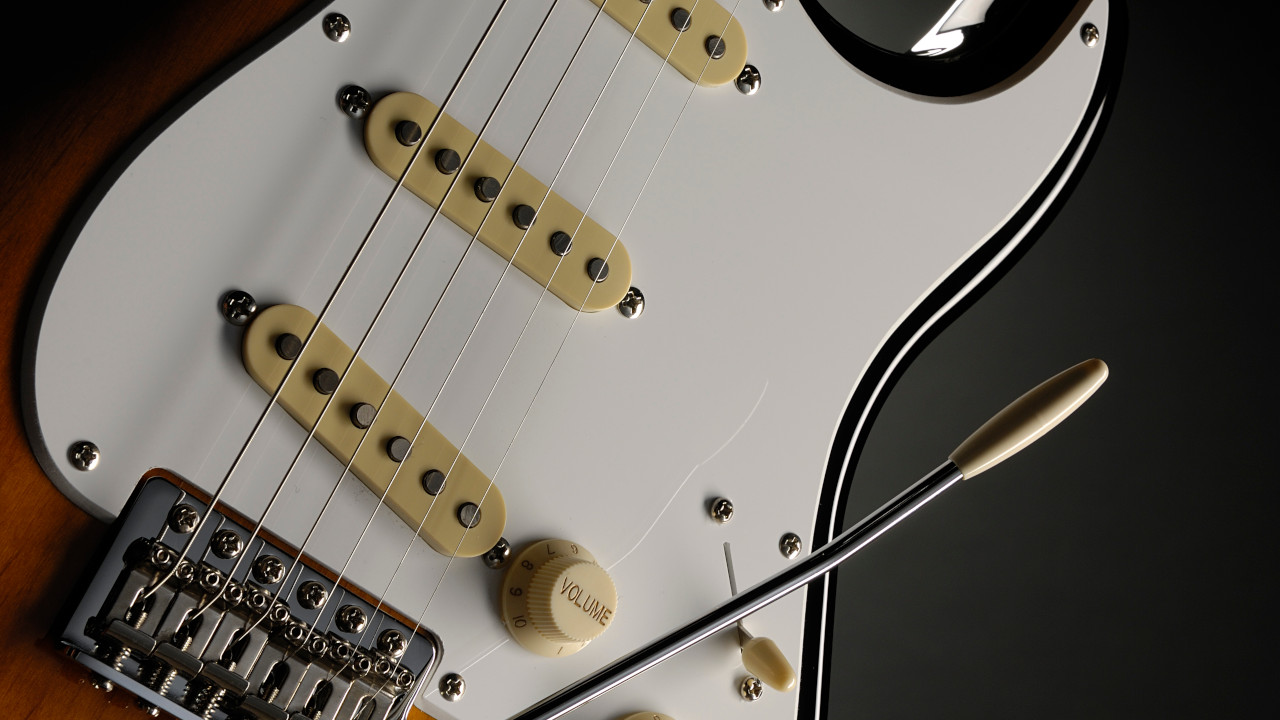
Specifications
Reasons to buy
Reasons to avoid
🔁 The Classic Vibe range is a top-of-the-line Squier, and if you're after a guitar you can play hard, rely on for consistency, and even gig with, this ‘50s Strat will be right up your street. Although it doesn’t 100 per cent follow Fender’s original blueprint, to keep costs down on materials, it has enough vintage charm to convince most of its heritage.
✅ Buy if you want a guitar that can grow with you: Whether you're starting out or already playing live, this Classic Vibe ‘50s Stratocaster has the looks, sound, and reliability to keep up, all without breaking the bank.
❌ Don’t buy if your set-up leans toward high-gain tones: Like most vintage-style Strats, this model is better suited to clean and edge-of-breakup tones than it is to modern metal riffage.
Build: ★★★★★
Playability: ★★★★½
Sound: ★★★★½
Overall: ★★★★½
A trusted staple in the Classic Vibe series, the ‘50s Stratocaster is one of the most popular Squier guitars in production. Rather than being a like-for-like replica of the original Fender blueprint, Squier has opted for more affordable materials to bring this perennial classic within reach of most normal budgets. Whether you are after a hard-working gigging guitar or a model that’ll take you from beginner to pro, you could do a lot worse than this Classic Vibe.
Build Quality: As mentioned, Squier has chosen materials like nyatoh for the body to keep costs down, but thankfully this doesn’t dampen the ‘Stratiness’ one bit. In our review, we found the weight comfortable and well-balanced. Finishes are neat and tidy across the board, with Black, Fiesta Red, 2-Color Sunburst, and White Blonde options available. With a maple neck and fingerboard, there is nothing flimsy about this build; it will take plenty of hard playing for years to come.
Playability: Like most Strats, pick up this guitar and you immediately feel at home. The body contours are supremely comfortable against your picking arm and torso, while the Slim ‘C’ neck profile is a crowd-pleaser. One thing to watch is the glossy neck finish; it can feel a little sticky under sweaty conditions. Otherwise, this Classic Vibe wears its vintage inspiration proudly, and Squier nails the ergonomics of a design that has barely changed since Leo Fender’s heyday.
Sound: If it is spanky Strat tones you are after, that is exactly what you will get. The three Fender-designed Alnico single coils deliver a punchy, authentic and articulate sound that leans far more toward Fender than Squier. The neck and middle pickups in particular have a lovely dynamic bite, and while budget guitars often falter at the bridge, this one holds its own. You will get plenty of vintage-inspired cut without the fizz. Sure, it won’t handle ultra-high-gain tones brilliantly, but then again, no vintage-style Strat really does.

"Squier consistently produces some of the very best affordable Strats money can buy, and this iteration of its Classic Vibe series proves that cheap does mean cheerful. The '50s specs of this model help provide an exciting and entertaining throwback to the genesis era of the Stratocaster at an accessible and affordable price tag."
Read more: Squier Classic Vibe ‘50s Stratocaster review
Best Telecaster

Specifications
Reasons to buy
Reasons to avoid
🔁 If you want a stylish, semi-hollow Tele that’s light on the shoulder and big on tone, the Classic Vibe '70s Thinline is ideal. With dual humbuckers, it’s perfect for players who want vintage flair that holds its own in the modern era.
✅ Buy if you want a lighter-weight Tele with a wide range of tones: All for well under $500, this lightweight Tele is sent from above for those who struggle with back pain.
❌ Don’t buy if you're looking for a traditional Tele twang: While there's still some snap in the bridge pickup, this model’s humbuckers and semi-hollow build offer a smoother, rounder tone than standard Teles.
Build: ★★★★
Playability: ★★★★½
Sound: ★★★★½
Overall: ★★★★½
The Squier Classic Vibe '70s Telecaster Thinline brings serious flair, feel and flexibility at a fraction of the cost of a Fender. Channeling the 1972 model, it features a semi-hollow soft maple body, a pair of Wide Range humbuckers, and all the retro swagger you could want. From funk to indie, blues to rock, this guitar is a genre-hopping workhorse.
Build Quality: Squier nailed the finishing here. The gloss polyurethane coat is neat, the natural maple body pops with the white pearloid pickguard, and the hardware punches way above its weight. We even found that retro-style tuners – often a weak point at this price – impressed with their reliability and smooth action. Like other models in the Classic Vibe range, you can expect no glaring QC issues, no rough fret ends and, like our review model, a surprisingly refined feel throughout.
Playability: Weighing around 7lbs, the Thinline is light on the shoulder and easy to handle for long sessions or gig sets. The “C”-shape maple neck with a 9.5” radius feels natural and inviting, whether you are strumming or fretting leads. The glossy finish might be a little sticky for some, but otherwise, it is an easy player out of the box.
Sound: The Fender-designed Wide Range humbuckers deliver a surprisingly articulate sound. You get the clarity of single coils with added warmth and power, making this a true chameleon. Dial back the treble for richer humbucker tones, or crank it up for clean, jangly riffs and funky bridge snap. The semi-hollow body adds a breathy acoustic resonance that fills out chords nicely, giving this Thinline a personality of its own.

"If you're on the hunt for a lightweight, versatile guitar for a modest price, the Squier Thinline Telecaster should be at the forefront of your considerations. The array of tones achievable from the Wide Range humbuckers is fantastic, especially when taking command of the onboard tone controls – it’s a certified genre chameleon. Its effortless playability, surprisingly sturdy hardware and eye-catching, boldly finished semi-hollow body set this Telecaster apart. The matching black bound neck and block inlays complete the package, making it a top contender in its class."
Read more: Squier Classic Vibe ‘70s Telecaster Thinline review
Best offset
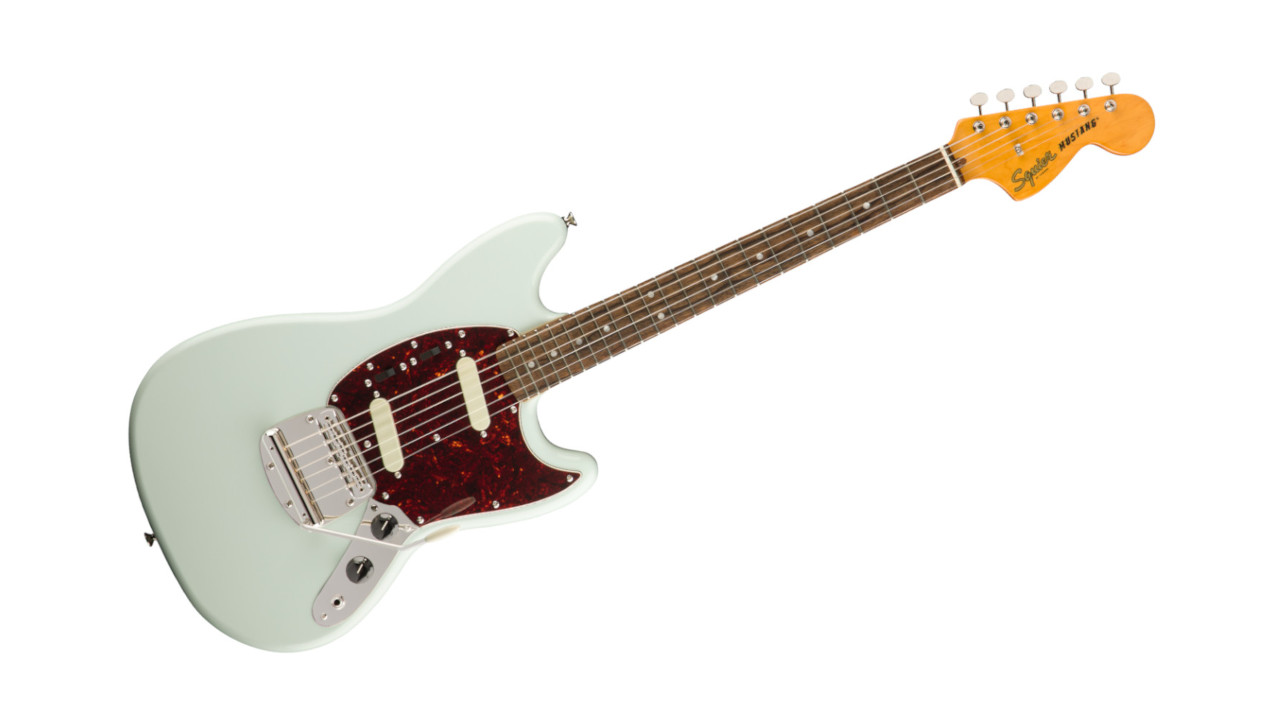
4. Squier Classic Vibe ’60s Mustang
Our expert review:
Specifications
Reasons to buy
Reasons to avoid
🔁 The ‘60s Mustang is one comfortable guitar. The short 24” scale length and lightweight offset body aren’t just suitable for kids, but any player who appreciates a guitar that essentially plays itself. The alternative vibes this guitar gives off have been good enough for Kurt Cobain and Thurston Moore, and with the Classic Vibe's build quality and affordability, this perennial classic has been brought to the masses.
✅ Buy if you want a shorter scale length: The Mustang is fantastic for kids, those with shorter arms, or guitarists who are sick of wrestling with bigger guitars.
❌ Don’t buy if you are not a fan of the finish: Currently, there is only Sonic Blue on offer - not ideal if you hate that color.
Build: ★★★★½
Playability: ★★★★½
Sound: ★★★★½
Overall: ★★★★½
Initially released as a student guitar back in the ’60s, the Mustang was forced to reinvent itself as an alternative classic once it found the hands of Kurt Cobain and The Melvins. Thanks to Squier, today’s students, beginners and indie guitar slingers have an affordable Classic Vibe ’Stang that has all of the retro charm, versatility and playability that the original did.
Build Quality: As with other Classic Vibe models, the ‘60s Mustang is built to an impressive standard. Whether it be the smooth vibrato of the tremolo system or the reassuring click of the guitar’s pickup switching system, for the money, it's an impressive feat of attention to detail. Squier has opted for a poplar body, and although it keeps the costs down, coupled with the 24” scale length, this ’Stang is as light as a feather and feels great because of it.
Playability: On top of the featherweight that makes marathon jams a breeze, the short scale length means long chord stretches are a doddle. It also gives the strings a bit more ‘slinky-ness’ and the lower tension feels like a totally different playing experience than a longer scale guitar. The ‘C’-shaped neck profile is the ideal ‘Goldilocks’ profile – not too thick or thin – and the body’s double-cutaway helps you run up to the tiny frets with ease.
Sound: Don’t be fooled by the two Alnico single coils; this Mustang packs plenty of tonal variety. Clean, it delivers that signature jangle perfect for shimmering indie lines. Add some gain, and its snappy attack punches through nicely. The out-of-phase setting adds a quirky, nasal edge that is ideal for players who like to get a little more experimental.
Best semi-hollow
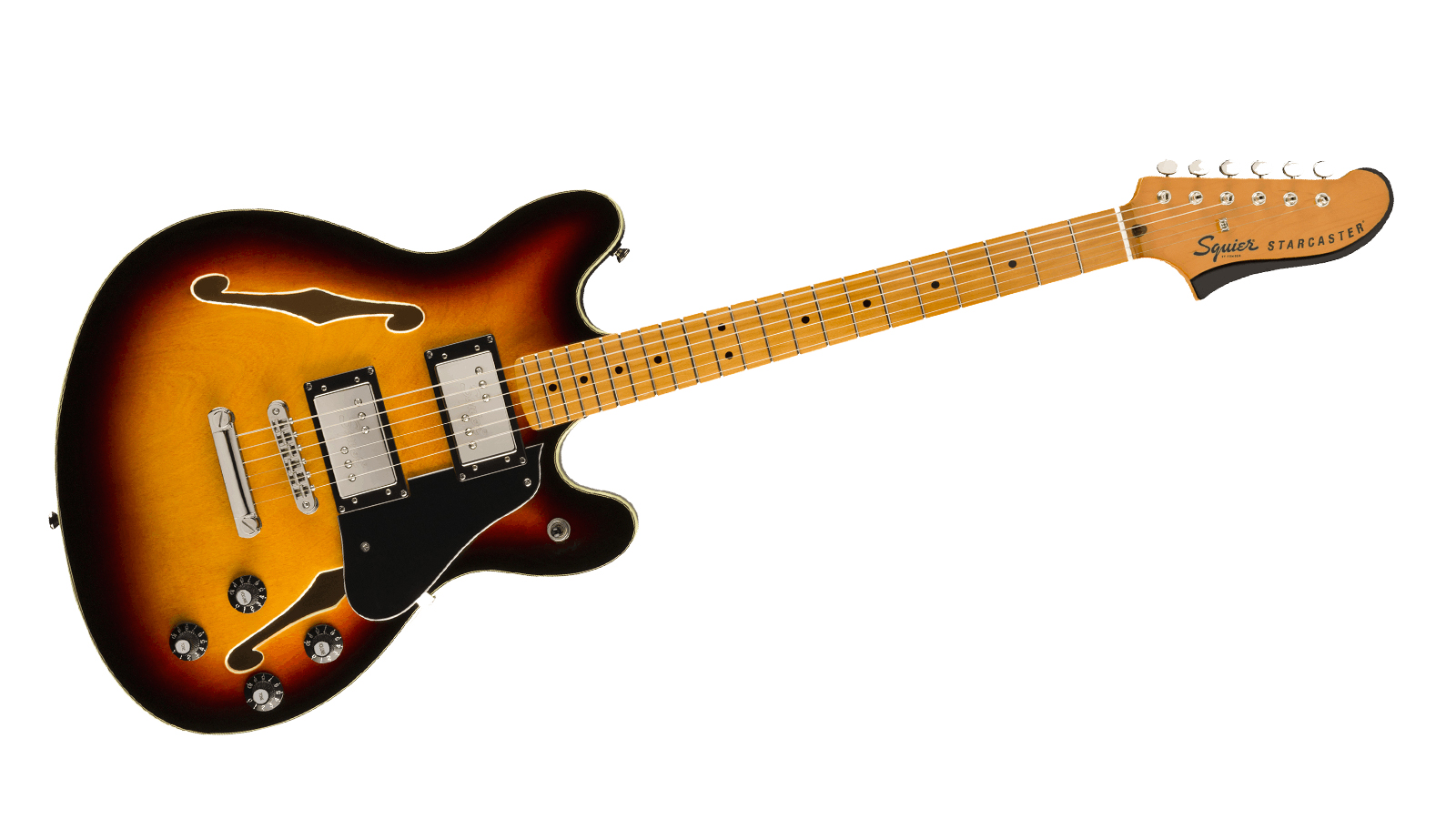
5. Squier Classic Vibe Starcaster
Our expert review:
Specifications
Reasons to buy
Reasons to avoid
🔁 Squier has given supporters of Fender’s cult classic a genuine alternative with this Classic Vibe Starcaster. If semi-hollow guitars are more your thing, the Starcaster is certainly worth a try. With an exceedingly bold look and punchy humbuckers, the Starcaster is not for the faint of heart.
✅ Buy if you want to stand out from the crowd: Semi-hollow guitars tend to follow a similar style, but not the Starcaster. The enormous headstock and offset body alone are enough to spot this guitar from outer space.
❌ Don’t buy if you like to stack Metal Zone pedals: Although the Starcaster handles it relatively well, its semi-hollow construction means feedback at loud volumes and high gain is always a risk.
Build: ★★★★½
Playability: ★★★★½
Sound: ★★★★½
Overall: ★★★★½
Unless you want Tom DeLonge’s colorful signature, purchasing a new Fender Starcaster isn’t an option. So, offset-semi-hollow-giant headstock-double-humbucker fans have Squier to thank for this awesome Classic Vibe Starcaster. A great option for the bold, the Starcaster has plenty of tricks up its sleeve and this audacious cult classic has won over many fans since its release.
Build Quality: Despite its budget badge, the Classic Vibe Starcaster holds its own against pricier models, even my Fender Modern Player version. The alder center block gives it some welcome heft and keeps feedback at bay, while the vintage-style tuners are both era-appropriate and genuinely reliable. The gloss finish might play it safe with only Sunburst and Natural finishes available, but the overall construction and detailing feel anything but cheap.
Playability: For some, the Starcaster’s body is a bit cumbersome and there is no denying that it has plenty of heft. Also, the solid center block adds a surprising amount of weight, so if you are planning on gigging, the Starcaster may not be the best option if you enjoy frolicking around the stage. That said, the ‘C’-shape neck feels particularly slim on the Starcaster and the 25.5" scale length makes it a different, yet Squier-familiar take on a usually 24.75” scale semi-hollow guitar.
Sound: Taking inspiration from Seth Lover’s wide-ranging humbucker design, the Starcaster’s Fender-designed ’buckers are a fitting tribute. In our review, we found that the neck pickup balances articulation and warmth that can be tamed for woolly jazz tones if your heart desires. With a versatile bridge pickup, the Starcaster’s acoustic qualities and bright natural harmonics pack plenty of punch when tapping into higher-gain sounds. Overall, for a guitar that looks a little different than normal, the sounds on offer trump its reputation for being niche.

"The flagship in this line, the Classic Vibe, could very well be the best semi-hollow out there for under £500. Don’t be fooled by the small ‘Crafted in Indonesia’ print on the back of the wonderfully oversized headstock, it’s the kind of weapon that could quite easily hold its own against American-made instruments retailing over four times as much."
Read more: Squier Classic Vibe Starcaster review
Best hybrid
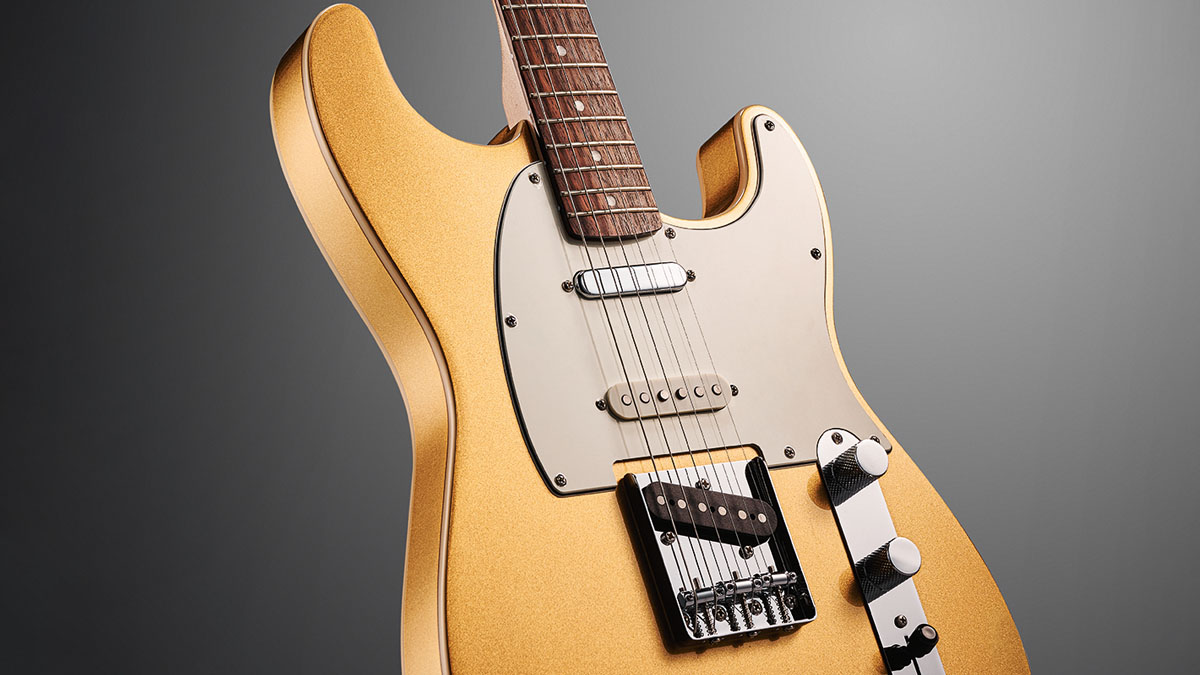
Specifications
Reasons to buy
Reasons to avoid
🔁 The Paranormal series continues to bend perceptions and this guitar is no exception. By mashing together a ’60s Custom Tele and Strat, this Nashville version has tones on tap in a very comfortable playing package. Not for the traditionalist but perfect for the experimental.
✅ Buy if you want a guitar that covers a lot of genres: By having Stratocaster and Telecaster pickups with a push/pull knob that activates even more combinations, this quirky guitar can do it all.
❌ Don’t buy if you are a sucker for tradition: If its versatility cannot win you over, the aesthetics alone are likely to turn traditionalists off.
Build: ★★★★½
Playability: ★★★★½
Sound: ★★★★★
Overall: ★★★★½
Squier’s Paranormal series is out to frighten, and traditionalists might find themselves peeking through their fingers. But the Custom Nashville Stratocaster could just win them over. By blending elements of a ’60s Custom Telecaster and a Stratocaster, this quirky hybrid deserves serious consideration.
Build quality: Although the Paranormal series sets out to defy expectations, it delivers every ounce of playability we have come to expect from top-end Squier guitars. In our review, we found that the body leans toward the chunkier side, which leads to a sturdy hold that sits steady on the lap. The Aztec Gold finish is a particular favorite and we were impressed with the fantastic set-up out of the box.
Playability: On top of the reassuring body, the neck leans a little on the slimmer side, which encourages playing for hours on end. By blending the best parts of a Stratocaster (the double cutaway) and a Telecaster (a robust, chunky body), it is no surprise that this guitar plays very easily. Although some may not get on with the gloss urethane neck finish, as sticky neck syndrome may creep in.
Sound: However, it is in the tone department where this guitar really shines. With Fender Alnico Tele pickups in the neck and bridge and a Strat-style single-coil in the middle, there is not much it can’t handle. A push/pull tone control lets you activate the neck pickup in positions 1 and 2, adding yet another flavor to an already flexible set-up. So even if the looks don’t win you over right away, the versatility just might.
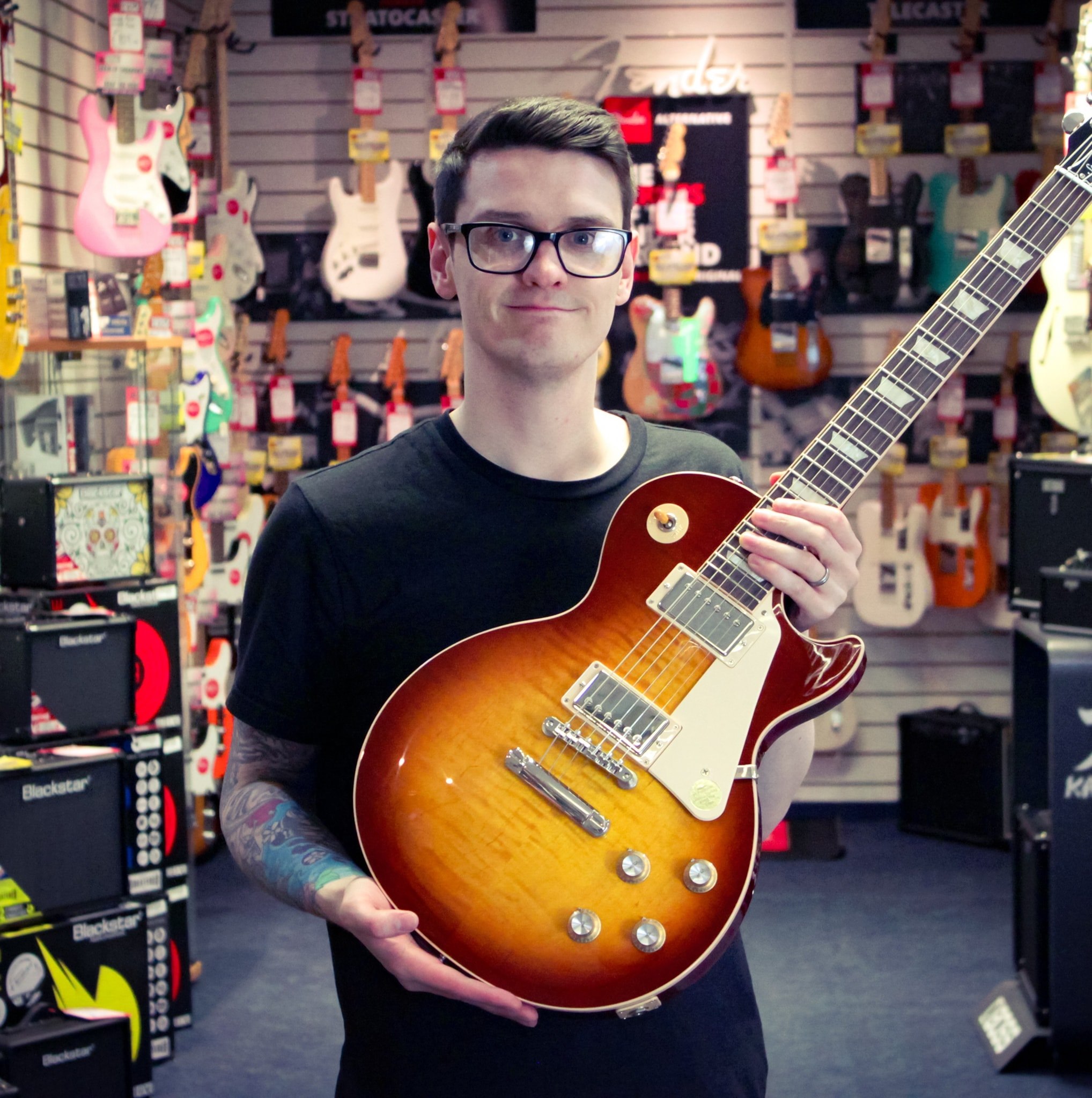
"Yes, the Custom Nashville Stratocaster may be an amalgamation of two Fender top dogs, and while it certainly isn’t an entirely new species, it is an intriguing hybrid that more than delivers on playability and tone."
Read more: Squier Paranormal Custom Nashville Stratocaster review
Best Jazzmaster
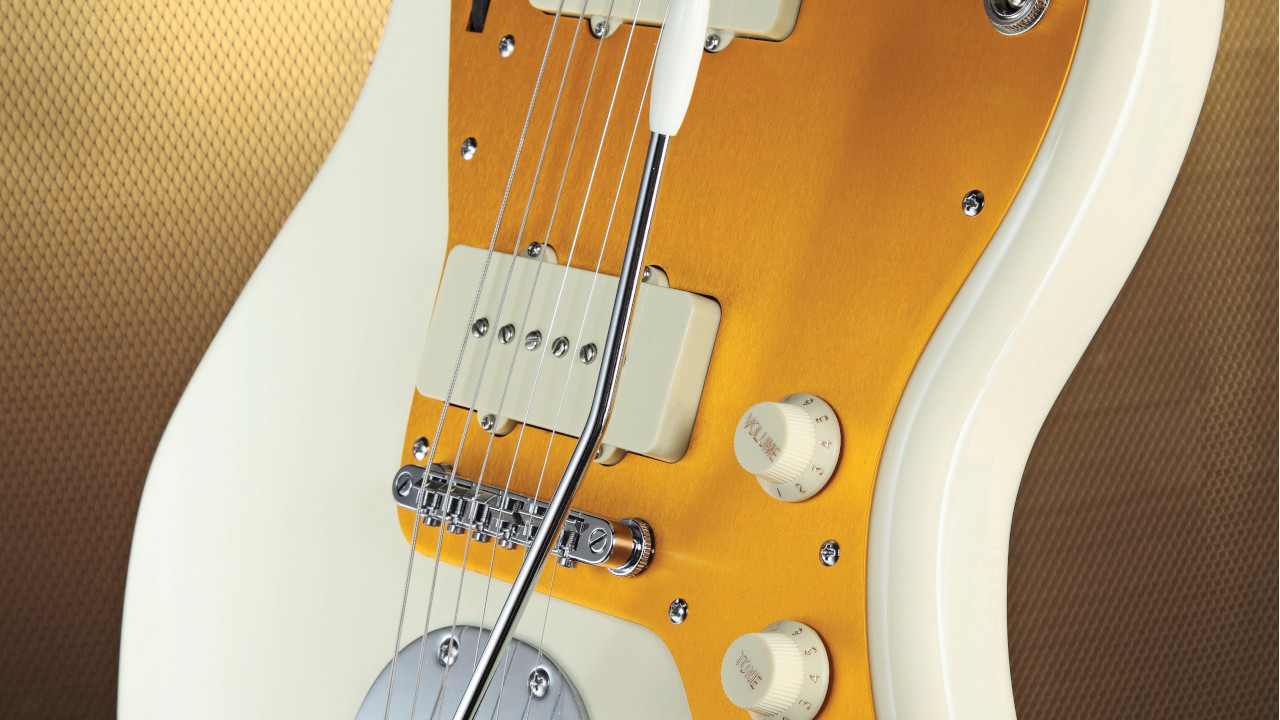
7. Squier J Mascis Jazzmaster
Our expert review:
Specifications
Reasons to buy
Reasons to avoid
🔁 Yes, this is an alt-rock fuzz machine – it’s J Mascis, after all. But beyond the indie credentials, this Jazzmaster is impressively built, with a slick-playing neck, vintage switching, and a smart Adjusto-Matic bridge upgrade. If you’re after one of the best Squier Jazzmasters around, look no further.
✅ Buy if you want an offset that can go the distance: J Mascis wouldn’t put his name on it if this thing wasn’t built well, and this is a legitimate guitar that feels, sounds and plays as good as it looks.
❌ Don’t buy if you are heavy-handed: If you finger notes particularly hard you will be in danger of pushing the note sharp due to the jumbo frets equipped on this.
Build: ★★★★★
Playability: ★★★★★
Sound: ★★★★★
Overall: ★★★★★
Dinosaur Jr. frontman, J Mascis, may prefer to use Telecasters in the studio, but it is the Jazzmaster that most people associate him with. His laidback, almost disinterested demeanor juxtaposes the fuzz-laden, ear-screeching solos on stage and they are more often than not performed with a Jazzmaster. Squier has given the next generation a chance to get alternative with this fantastic signature option, and here at Guitar World, we are big fans.
Build Quality: The J Mascis signature Jazzmaster has always impressed when it comes to build quality. The finishing is consistently clean, a bit more polished than J’s own well-worn guitars, sure, but still done to a high standard. For a mass-produced model, the attention to detail really stands out. Squier’s decision to include an Adjusto-Matic bridge, like the one Mascis uses, helps keep the strings secure and improves tuning stability. As for the vintage-style floating tremolo, it’s smooth, responsive, and adds a lovely touch of warble without causing any tuning headaches.
Playability: Comfort is key with this guitar. Although it may not look it, the offset body of a Jazzmaster is perfectly balanced both sitting and standing up, and the J Mascis signature is no different. A big winner is the smooth satin neck, different from other glossy-neck Squier models found in the Classic Vibe range, and it plays like butter. Although the jumbo frets require a bit more attention not to push the note sharp, they make for smooth vibrato and a quick string reset.
Sound: So, how does this guitar sound? Well, the single-coil soap bars are very well-rounded and woody when playing clean. When you start to add a bit of dirt and fuzz, they turn into a fully fledged grungy behemoth. Having the original Jazzmaster switching to hand is a great benefit too, from searing solos in the lead circuit to a warm, mellow tone with the flick of a switch to the rhythm section. It adds a layer of versatility to a superb signature from Squier.
Best retro
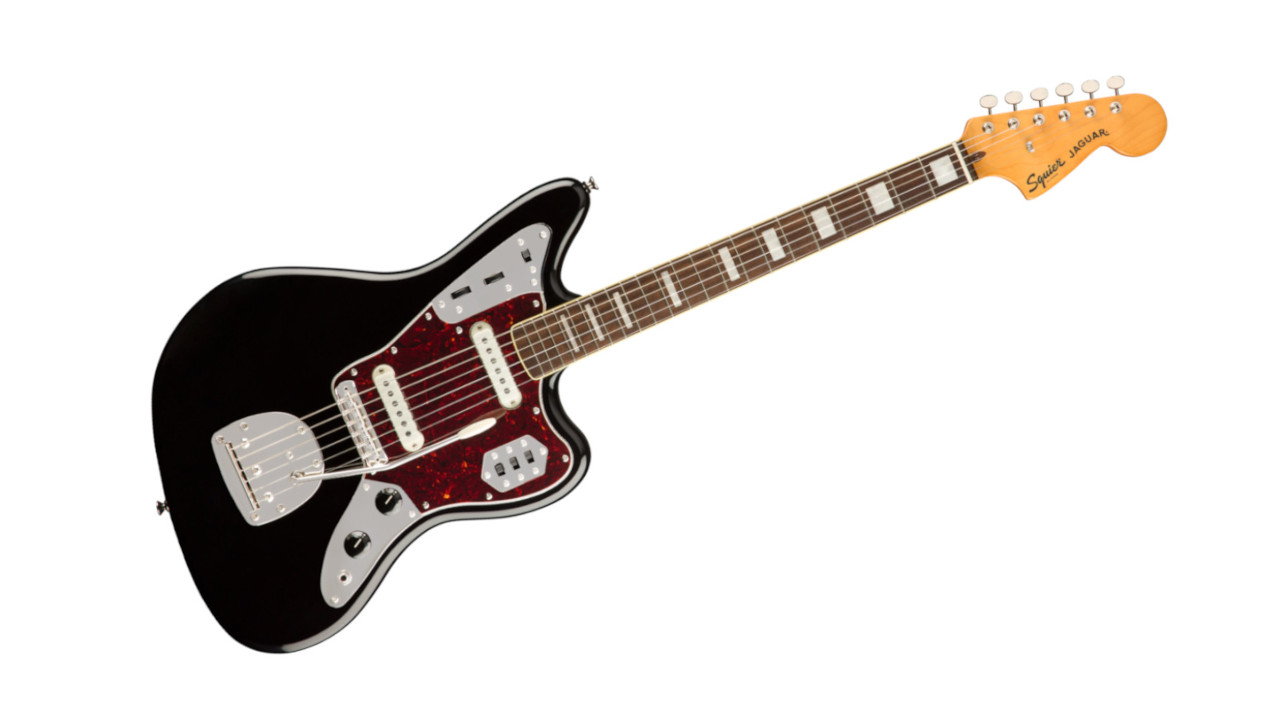
8. Squier Classic Vibe ‘70s Jaguar
Our expert review:
Specifications
Reasons to buy
Reasons to avoid
🔁 This short-scale offset is anything but shy. With immediate, punchy pickups and classic Jaguar controls, it’s ideal for players who want something a little different. If you’re after jangly cleans, a smooth floating vibrato, and a familiar-feeling neck, there’s a lot to love here.
✅ Buy if you are bored with everything else: The Jaguar is a little different and that’s why it is loved. If you are bored with the typical Strat or Tele, give this Jag a try.
❌ Don’t buy if lots of controls scare you: It goes without saying, but the Jag is loaded with switches and knobs. It may be overkill and put some people off.
Build: ★★★★½
Playability: ★★★★½
Sound: ★★★★★
Overall: ★★★★½
From surf rockers to ’90s alt icons, the Jag’s offbeat charm, punchy tone and futuristic look made it a cult favorite. The Classic Vibe ’70s Jaguar taps into that heritage beautifully, delivering the short-scale comfort, dual Alnico single-coils and distinctive switching layout that made the original so unique, all at a price that does not require vintage collector money.
Build Quality: For a guitar packed with this much character, the build quality does not disappoint. The poplar body is paired with a sturdy maple neck and Indian laurel fingerboard, all finished to a high gloss standard. The vintage-style floating vibrato system feels smooth and reliable, while the 6-saddle bridge helps keep intonation dialed in. For a sub-$500 guitar, it punches well above its weight in terms of finish and detail.
Playability: That shorter 24" scale gives the Jaguar a slinky, inviting feel that is perfect for fast chord changes, bends and expressive vibrato. The familiar C-shaped neck sits comfortably in hand, and the 9.5" radius keeps things modern without losing the Jag’s vintage soul. It is a brilliantly playable offset, whether you are noodling in your bedroom or hammering out complex leads, Johnny Marr style.
Sound: In terms of sound, the Jaguar is one of a kind. The Alnico single coils offer plenty of punch and jangle, making it a dream for clean, chorus-drenched tones or slightly overdriven grit. And with its wealth of switching options – including the rhythm/lead circuits and pickup on/off toggles – you can get lost (in a good way) exploring everything it can do. It is a tone tweaker’s playground, offering clarity, cut, and just the right amount of growl.
Best for beginners

9. Squier Affinity Series Telecaster
Our expert review:
Specifications
Reasons to buy
Reasons to avoid
🔁 The Affinity Telecaster is ideal for those after a straight-shooting, well-constructed and affordable Telecaster to start out with. It has been a perennial favorite of beginners thanks to its durable construction, accessible neck and classic Tele Tones. If you are just starting, the Affinity Telecaster is a great option.
✅ Buy if you want an honest entry-level model that's true to the original: The Affinity Telecaster is pretty traditional; there's no bells and whistles, just a workman's Telecaster that's a great learning platform.
❌ Don’t buy if you've started with a Sonic: Although the Affinity Tele is a brilliant beginner's option, you won’t feel much difference from a Sonic Telecaster. Perhaps shoot a little higher if you've started with a Sonic.
Build: ★★★★½
Playability: ★★★★½
Sound: ★★★★
Overall: ★★★★½
The Squier Affinity Telecaster is not just one of the best Squier models; it is one of the best – if not the best – beginner electric guitars on the market. Sitting above the Sonic series yet below the Classic Vibe and Paranormal series, the Affinity Telecaster is a great choice for those starting out who want a no-frills, solid platform to learn electric guitar.
Build Quality: For a guitar in the $200 region, perfection is never guaranteed. However, the Affinity is not claiming to be perfect. Instead, the through-body hardtail bridge, satin-smooth ‘C’-shape neck profile and sealed die-cast tuning machines are all utilitarian, consistent and offer plenty of stability, exactly what is needed with a beginner’s guitar. There are four finish options – Lake Placid Blue, Olympic White, Butterscotch Blonde and 3-Color Sunburst – all of which are classic colors draped over a light-weight poplar body that is both comfortable and resistant to abuse.
Playability: From my time working in music retail, the Affinity Tele is loved by fresh-faced players due to its playability. The ‘C’-shape neck profile is, of course, very comfortable and Squier classifies it as ‘slim’, which is a dead winner for beginners who try to wrap their hand around the guitar’s neck. Poplar is a lightweight material, which makes playing both standing up and sitting down a breeze. Also, great news for lefties, as the Springsteen-inspired Butterscotch Blonde comes in a left-handed variant; winners all around.
Sound: With its classic Telecaster single-coil set-up, the Affinity gets you straight into that unmistakable Tele twang. While some say the Tele isn’t as versatile as a Strat, the range it covers across genres tells a different story. With plenty of bite in the bridge and sweetness in the neck, this Telecaster is a great choice for learning what this classic guitar can do.
Best 12-string
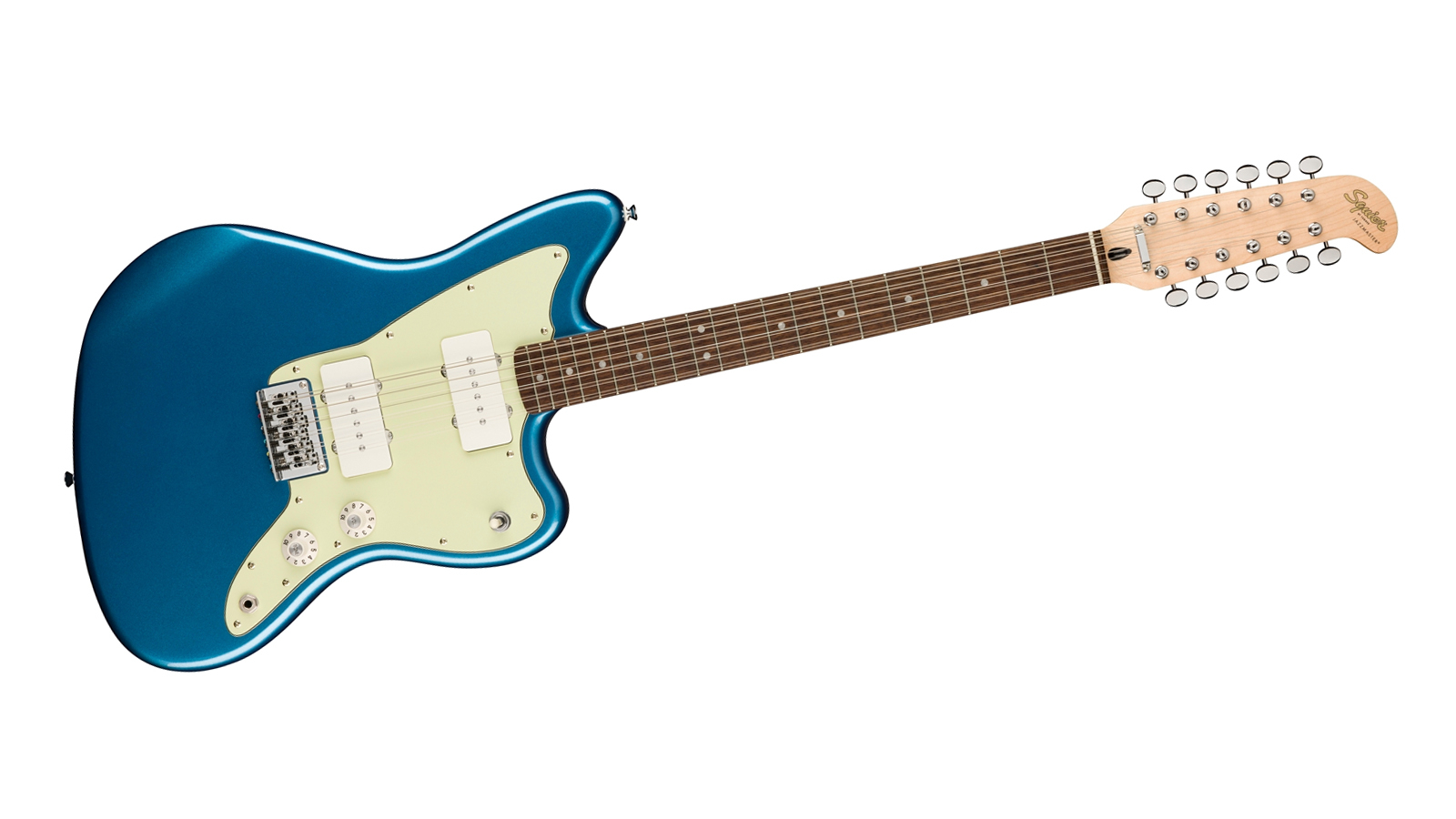
10. Squier Paranormal Jazzmaster XII
Our expert review:
Specifications
Reasons to buy
Reasons to avoid
🔁 If you're after that unmistakable 12-string jangle, then this is the one for you. An incredibly fun guitar to play and listen to, the Jazzmaster XII will stand out in any dense guitar collection in terms of uniqueness and inspiration.
✅ Buy if you want to try something different: If you already have a lot of guitars and feel uninspired, then the Jazzmaster XII is the one for you. It's fun to play and sounds killer.
❌ Don’t buy if you're just starting out: This is perhaps a ‘complementary’ guitar instead of one you should begin with. If you're starting, stick to something a bit more traditional.
Build: ★★★★½
Playability: ★★★★½
Sound: ★★★★★
Overall: ★★★★½
The Jazzmaster XII is the pinnacle of Squier’s experimental Paranormal series. This is no ordinary Jazzmaster, sure, it has an offset body and soap bar-style pickups, but that is where the differences end. The 12-string jangle delivers twice as much chime and jangle, all for a very affordable price. What is not to love?
Build Quality: 12-string guitars can be tricky. Double the strings means double the tension, so having this guitar built well is very important. However, Squier seems to have nailed it. From the hockey stick headstock to the fully adjustable 12-saddle hardtail bridge, this guitar is built to withstand the rigors of 12-string tension. To support the neck, Squier cleverly installed reinforced graphite, which is a clever and reassuring touch in terms of longevity and stability.
Playability: Wielding a 12-string can also be an awkward undertaking, but Squier has done a great job of balancing playability and durability. Naturally, the neck needs to be wider on a 12-string, but the ‘C’-shape profile on this Jazzmaster feels very manageable. Although with such a big headstock, this guitar can feel slightly neck-heavy, so bear that in mind if you are opting for this jangly monster.
Sound: If you have never had the pleasure of playing a 12-string electric, don’t walk, run to your local guitar store to try the Jazzmaster XII. The Fender-designed Alnico single-coil pickups do a fantastic job of delivering chime, jangle and clarity, and if you want even more fun, whack some distortion on for a chorusy tornado. Don’t get us wrong, a 12-string will always be just that, but if you want to add some depth to a track, or even have a guitar in the studio for instant inspiration, then the Jazzmaster XII is your best choice.
Squier range guide
There are loads of different Squier guitars to choose from, whether you want a beginner instrument or a regularly gigging workhorse. The current Squier ranges are divided into six main categories. Let’s get to know them a bit better…
Squier Sonic series
You can trust Guitar World
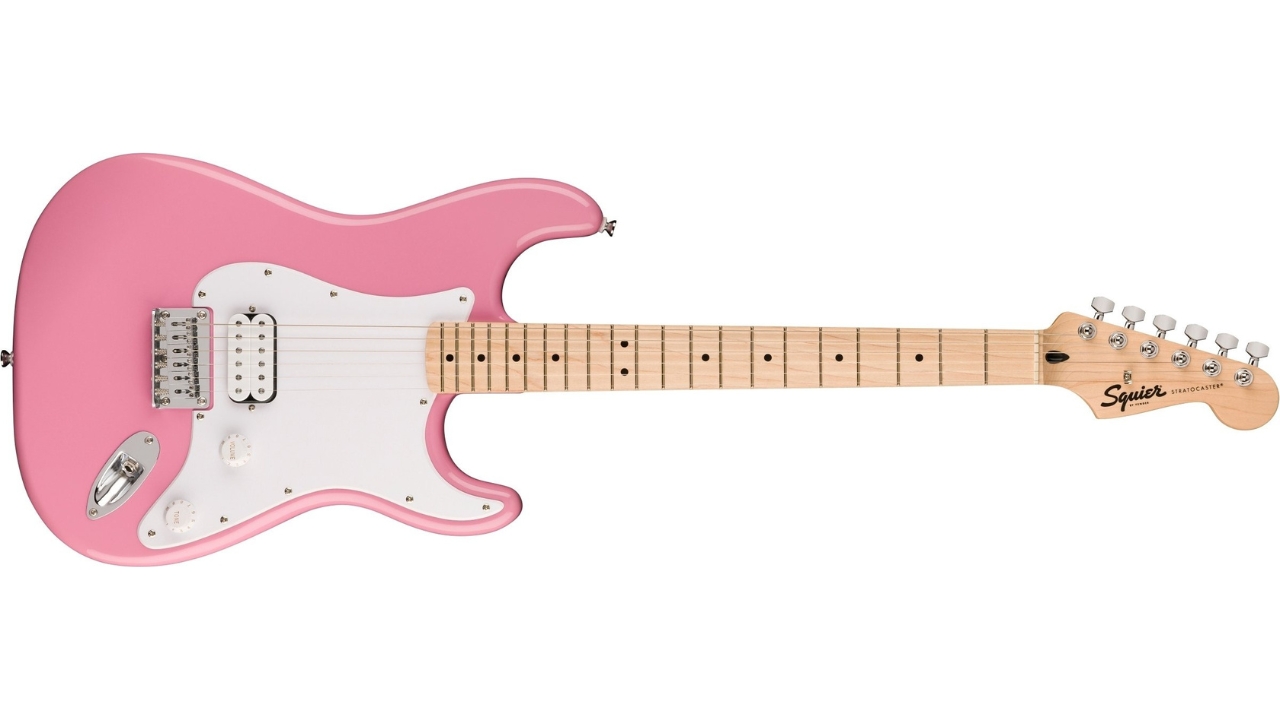
Squier’s Sonic range represents some of the best bang-for-buck guitars out there. They are entry-level instruments, and as such, the build quality and components aren’t as high quality as they are on some other Squier models. But, they’re cheaper, making them very accessible. Compared to some other guitars of a similar price point, the Squier Sonics are more playable, they sound great and they hold their tuning well.
In the Squier Sonic series, you can get a Strat, Tele, Esquire (like a Tele but with a single pickup), Mustang, Precision Bass, and Bronco Bass. These come in varying configurations, some will have single coil pickups while others have humbuckers, and there's an excellent range of color options too.
Squier Affinity series
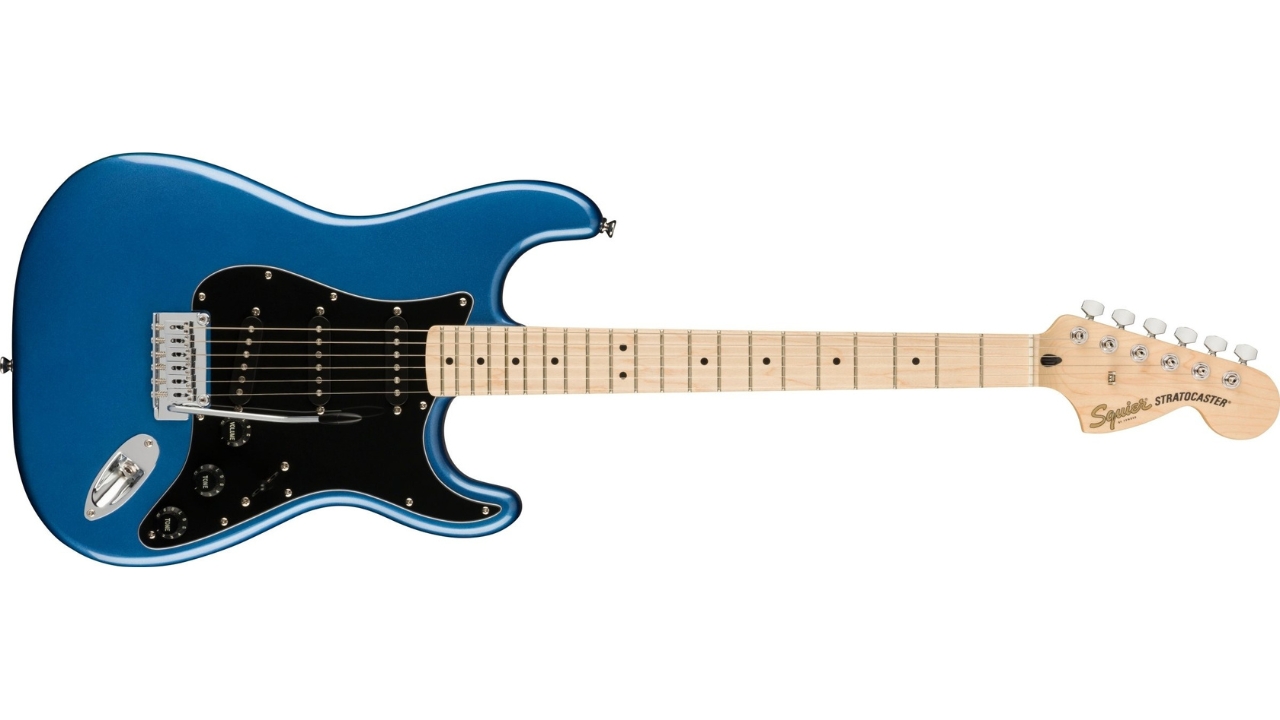
This is Squier’s student range and comprises all the usual Fender models – Strat, Tele, etc.- and some more interesting models for those who want to try something more exciting. They’re a step up in terms of quality from the Sonic range, and whilst they make for great beginner guitars, more advanced players will no doubt get along well with them too.
Squier Affinity guitars also make great upgrade platforms. Changing the pickups in a Squier Affinity will get you a lot more lifespan, without you having to shell out for a brand-new guitar. Because they're so well built, you can absolutely gig with one of these.
Squier Classic Vibe series
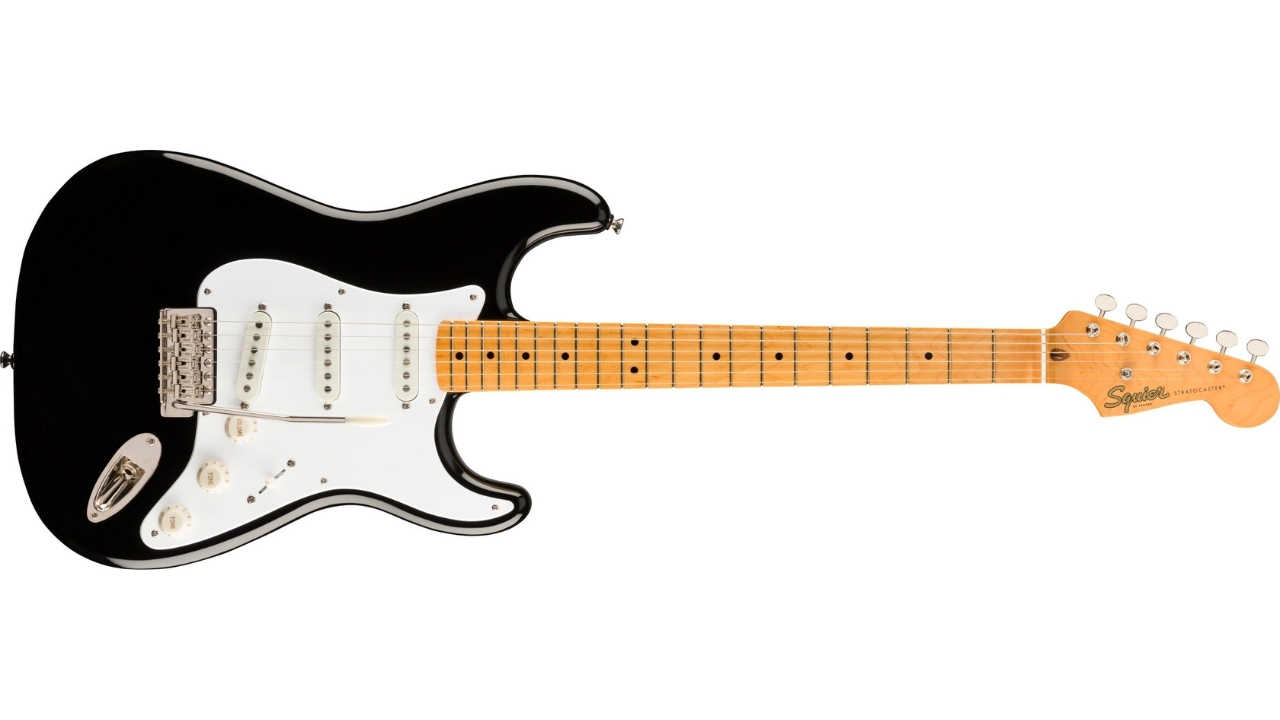
The Classic Vibe series really does showcase some of the best Squier guitars on offer. They’re replications of some classic-era Fender guitars. An original ’60s Fender Strat is going to cost you a lot of money, and whilst the Classic Vibes sit at the higher end of the Squier price range, they still give you a really nice vintage feel, look, and sound, for a fraction of the cost.
Perfect for players who want a classically-voiced guitar without forking out too much, the Classic Vibe series is very highly rated by players all over the world. Two of our top three picks in this guide are from the Classic Vibe series, which shows you just how good they really are.
Squier Contemporary series
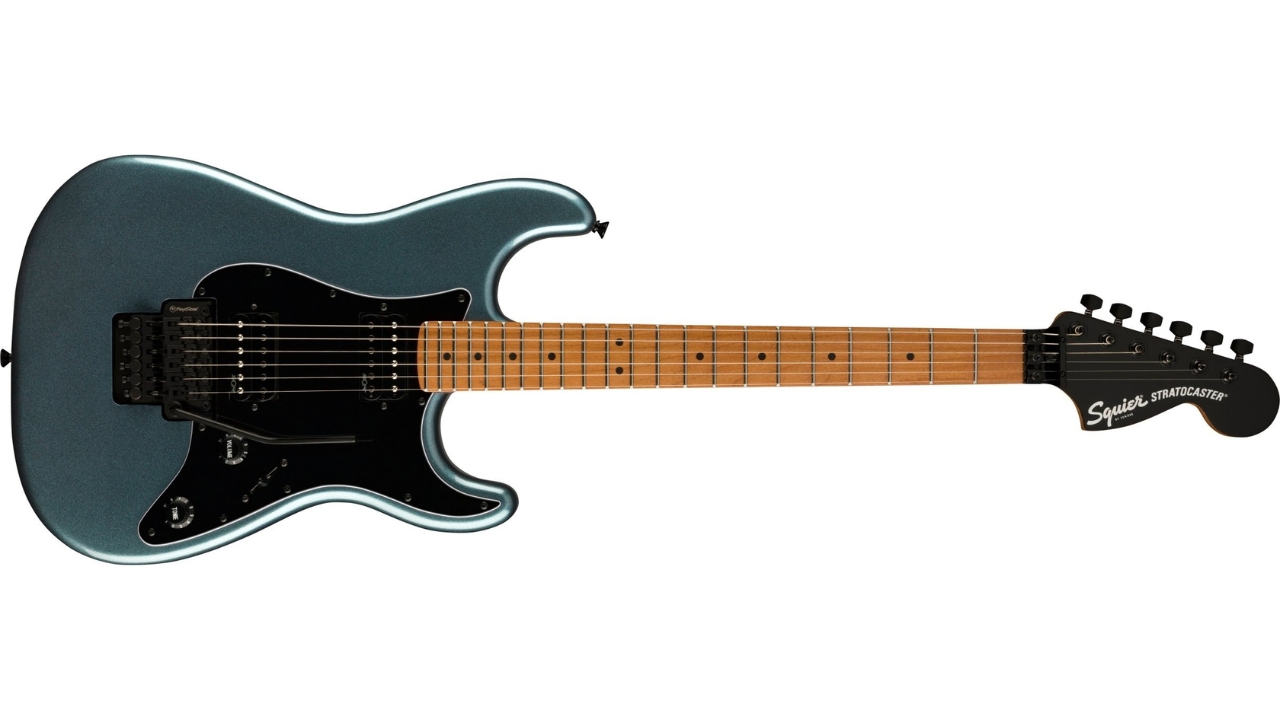
Squier Contemporary guitars usually feature more unusual pickup configurations, as well as some really unique finishes. As the name suggests, they’ve got more modern specs, so expect to see hotter pickups, locking tremolos, and more features that render them useful for contemporary players. Whilst they’re great for any style of music, hard rock and metal players love them.
Quite a few of the Contemporary series have a roasted Maple neck, which is a very premium bit of kit for this price point. While they're not one for the vintage-loving guitar player, the Squier Contemporary series is a great choice if you want something a bit edgier.
Squier FSR/Anniversary Models
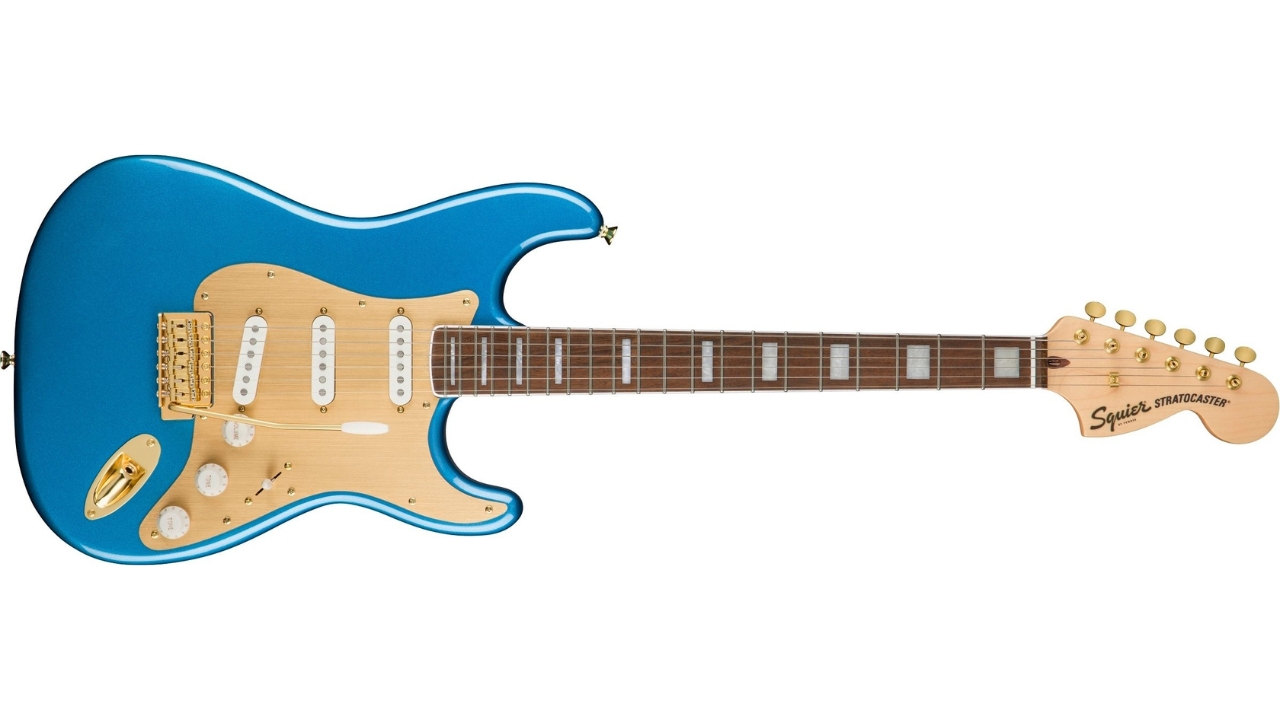
You’ll also see some more limited edition models, sometimes celebrating an anniversary or FSR models -– this stands for Fender Special Run. The specs on these can vary quite a bit, but if you’ve seen one that you like, don’t hang around too long as they won’t be in production forever.
Fender's 40th Anniversary Squier models are denoted by a gold scratchplate, giving them a touch of class to their looks. The series covers the full breadth of Fender's most famous guitars, with Strats, Teles, Jazzmasters, and a couple of basses delivering stunning looks and brilliant playability.
Squier Paranormal series
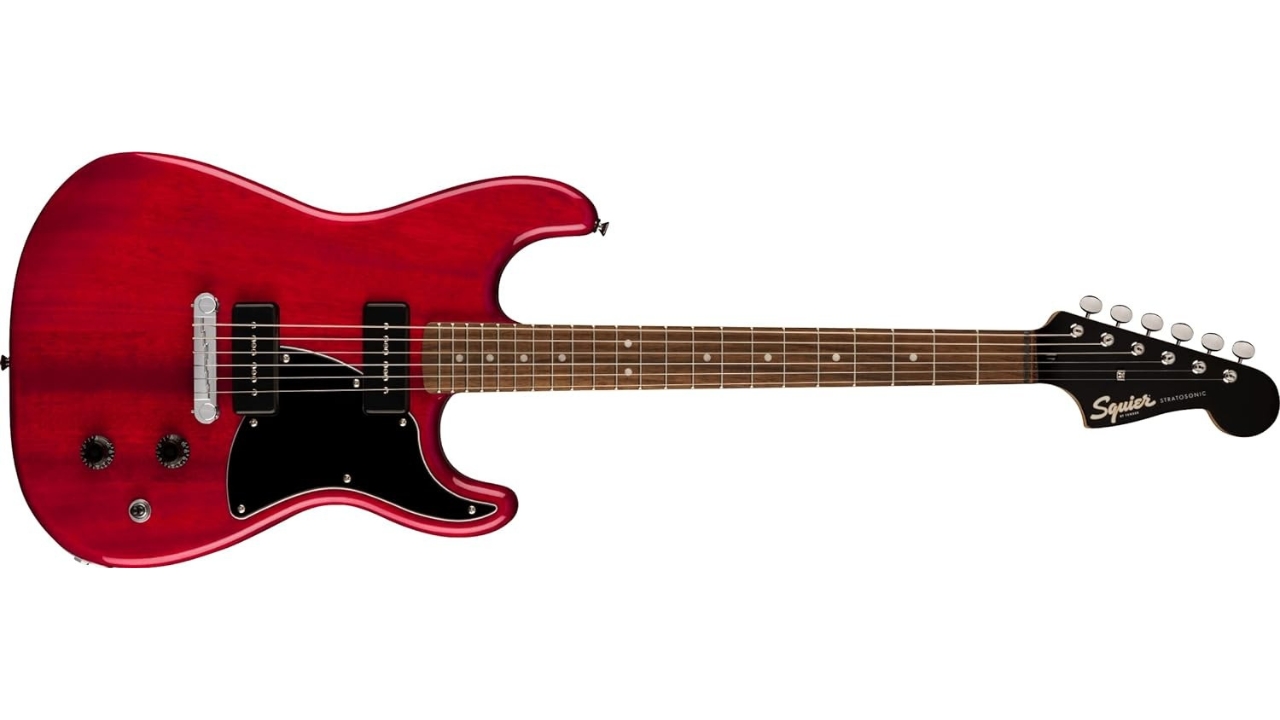
This is Squier’s more experimental range. Here you can find pickup configurations that you would not normally see on a certain body shape – Tele single coils in an offset body, for example. These guitars are built to a really good standard, offer some really unique tones, and allow for players to stand out from the crowd.
You can get 12-string guitars, baritone guitars, and plenty of other oddball choices. If a regular Strat is a bit too boring for you, then a Squier Paranormal guitar is the way to go.
FAQs
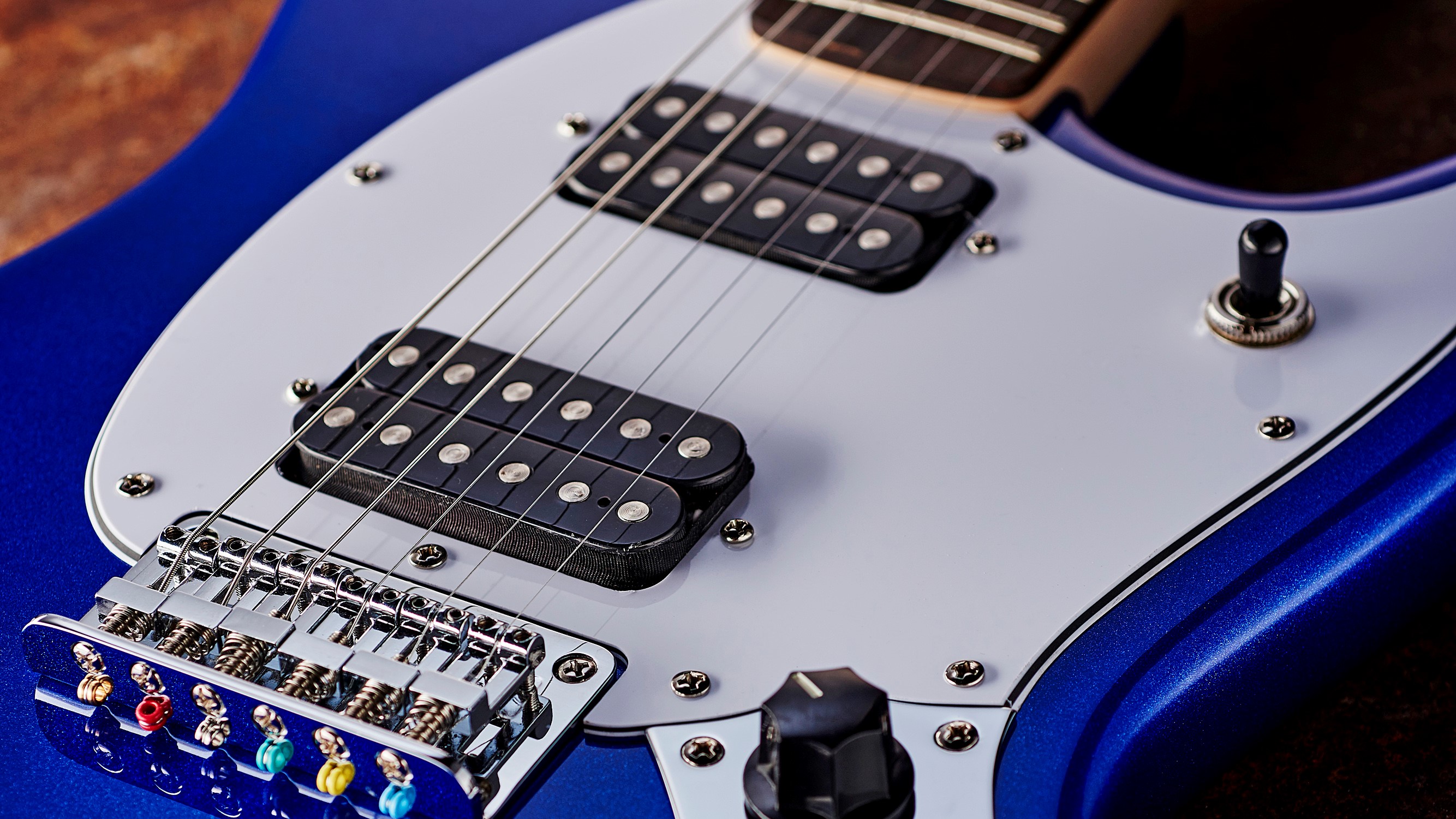
Why should I choose a Squier?
It's a fair question. Why, when there's such a huge wealth of budget-friendly guitars around, should you commit to one particular brand?
Well, simply put, we think Squier is one of (if not the) best brands when it comes to the sheer quality of workmanship. This eye for detail translates directly into the guitars being of a fantastic standard – one which we think is pretty much unbeatable for the money. When the 'Fender' name is at stake, you can be damn well sure that these guitars are going to be top quality, every time.
Another reason why you should choose a Squier is the sheer amount of choice you've got. The Squier product catalog is vast, and always growing – whether it's with more Fender classics like the Strat or Tele, or something slightly more wacky and unorthodox – so you know there's likely to be something to suit you and your style down to a tee.
Are Fender and Squier pickups the same?
Fender and Squier are known for their single coil pickups. Their most famous models, the Tele and the Strat, are usually single-coil equipped and can be heard on countless classic records over the last 70 years. Tones do vary from model to model, but generally speaking, single coils tend to sound bright, snappy, chimey and can stay cleaner for longer.
That said, there are some Squier guitars out there fitted with humbuckers. In contrast, these are usually warmer, fuller sounding, mellower and have a hotter output so can break up (distort) quicker. Both kinds of pickups can be heard throughout pretty much every genre of music, so it’s not a case of ‘humbuckers are best for rock’ etc - they’re just to different players’ tastes.
Are Squier and Fender the same company?
Quite frankly, yes. We all know Fender, and now, you should know Squier. However, Squier isn’t a new kid on the block, not by a long shot. Squier was initially founded as the V.C. Squier Company all the way back in 1890. Starting out as a string company for violins, banjos, and guitars, the first iteration of Squier lasted until 1965 when Fender purchased it.
It wasn’t until 1982 that Fender resuscitated Squier and began producing guitars under the Squier name to combat much more affordable Fender-like guitars coming from places like Japan. Today, Squier has cultivated a following all of its own, from beginners to touring musicians such as Steve Rothery, Joe Trohman and J Mascis.
Is Squier just as good as Fender?
There is no denying that the best Squier Classic Vibe models can hold their own against Fender’s Standard series, after all, many are made in the same Indonesian factory. But it is not entirely fair to compare Squier and Fender across the board.
Fender’s American-made guitars are built using higher-end materials, often by hand, and series like the American Vintage II are crafted to vintage-accurate specs by highly trained luthiers. Comparing those to mass-produced guitars isn’t exactly apples to apples.
That said, Squier still produces some killer instruments. The Classic Vibe series or 40th Anniversary models, in particular, are impressively well built and more than capable of being reliable workhorses, on stage or in the studio.
Can I gig with a Squier?
Absolutely! There is a plethora of famous guitarists who tour the world with Squier models – Steve Rothery and Joe Trohman, to name just two. If it is good enough for them…
We have also seen plenty of function band guitarists whip out a Squier and get through an entire wedding set without a problem. Quite frankly, if your guitar stays in tune, sounds good to you (and your bandmates), and looks the part, gigging with a Squier is more than plausible.
In fact, it might even be wise to grab a Classic Vibe Stratocaster if you have got a more sentimental or precious guitar you would rather not take to a dingy venue.
Do Squier use the same pickups as Fender?
Not exactly. While Squier guitars often feature pickups designed by Fender, they are not the same pickups used in Fender’s American, Mexican, or Indonesian-made models. Squier’s pickups are generally made using more cost-effective materials and manufacturing processes, which means they don’t quite deliver the same level of detail, clarity, or dynamic response.
That said, they are still voiced to capture the essence of the parent Fender models. A Squier Strat will still sound like a Strat, and a Squier Tele will still give you that Tele twang, just with slightly less refinement. You might notice less definition under high gain, or a narrower frequency response compared to Fender’s higher-end pickups.
For beginners and casual players, though, the difference will not always be obvious. And the good news is that most Squier models (especially in the Classic Vibe series) take well to pickup upgrades down the line, so you can always hot-rod your tone later.
Glossary
Alnico single-coil pickups: Alnico stands for aluminum, nickel, and cobalt, which are the metals used to make the magnets in the pickup. Single-coil refers to a pickup design that uses one coil of wire wrapped around magnetic pole pieces to detect string vibrations and produce sound.
C-shaped neck profile: The most common neck profile, featuring a comfortable, oval-shaped contour that fits naturally in the hand. Unlike chunkier U- or D-shaped necks, the C-shape offers a balanced feel suited to most playing styles.
Fender-designed pickups: On higher-end Squier models, many are equipped with this type of pickup that has been designed by Fender in the States, but produced in Squier’s Indonesian or Chinese factories.
Hardtail bridge: A fixed bridge design that anchors the strings directly to the body. Unlike floating bridges, hardtails do not allow vibrato use with a tremolo arm, but they offer excellent tuning stability and sustain.
Offset guitar: This is a type of guitar that is asymmetrical at the waist. The most popular Squier offsets are Jazzmaster and Jaguar models.
Semi-hollow body: The opposite of a solid body, semi-hollow guitars have two routed cavities in the body with a solid center block running down the middle of the body.
Short-scale guitar: This refers to the length of the guitar from the bridge to the nut; on Squier guitars, they are typically 25.5” or 24” on short-scale models.
Vintage-style tuners: Tuning machines based on classic designs, typically featuring smaller metal buttons and a slot-and-post system where the string end is inserted vertically into the post before winding.
Wide Range humbuckers: Fender’s unique take on the humbucker, originally designed by Seth Lover. Unlike traditional humbuckers that use a bar magnet, Wide Range pickups use individual pole pieces for each string, offering greater clarity and dynamic response.
How to choose a Squier guitar
There may be a few reasons you are considering a Squier as your next guitar purchase. Perhaps you are a beginner looking for amazing value, maybe you are a gigging session musician and looking for a reliable workhorse to batter on stage, or maybe you are intrigued about the quirkiness on offer in the Paranormal range. No matter what angle you are coming from, there are a few things to consider when making your next Squier purchase. Let’s take a look at some.
Firstly, what are you looking to spend? Squier tends to max out at around $500/$600 and is as affordable as $150, so there is plenty of scope to spend or save, depending on what you want to do. Beginners can opt for the Sonic or Affinity range to save a few bucks while picking up a dependable guitar, while Anniversary models or signatures like J Mascis’ will cost you a bit more, but deciding what you want to spend before jumping into it will help eliminate choices you are unlikely to go for and help you land on the right range.
Once you have narrowed down your budget and range, the next thing to think about is body shape. Squier offers just about every classic Fender silhouette, from the ever-popular Stratocaster and Telecaster to offsets like the Jazzmaster. There are also some shapes exclusive to Squier, like the Jazzmaster XII and Starcaster, a model Fender no longer produces outside of signature editions.
Body shape matters more than you might think, as it affects how comfortable the guitar feels and how you physically interact with it. Some designs just feel right, almost like they respond to you differently; it is a subtle but important connection.
Arguably, the most important decision you will make is choosing the right pickups. They shape your tone more than anything else. Want warm, woolly tones? Go for a set of wide-ranging humbuckers. Prefer something with bite? A Telecaster’s bridge pickup might be your thing. After that iconic glassy spank?
Strat-style single-coils deliver. The beauty of the Squier lineup is the variety on offer, from traditional set-ups like the single-coils in the Classic Vibe ’70s Jaguar, to Seth Lover-inspired humbuckers in the Starcaster. Whatever your flavor, there’s something here for you.
Lastly, let’s talk about scale length. While most Squiers feature the traditional 25.5" scale, there are a few short-scale options in the mix. Take the Classic Vibe Jaguar or the Sonic Mustang, both rock a 24" scale, which makes the strings feel slinkier and brings the frets closer together.
That 1.5” difference might not sound like much on paper, but in practice, it can really change how the guitar feels, especially if you are used to standard-scale instruments or relying heavily on muscle memory.
How we test
When testing a Squier guitar, we'll use all our usual processes in testing a guitar, ensuring we rigorously go over every aspect of the instrument in question. With literal decades worth of experience in playing guitar, you can rest assured our recommendations come from a place of knowledge.
When we first get a guitar in for testing we'll begin by examining the instrument in detail. We're looking for any potential issues in the finish and build quality, whether that's examining the neck pocket or ensuring any binding has been properly applied. We'll make note of the hardware, and the general configuration of the guitar too, to further inform our review and who it's for.
Once the visual inspection is over, it's time to check out the playability. We'll play a huge variety of styles on any guitar we can get, paying attention to the feel of the neck, the ease of the action, and the spacing of the strings. We're looking to see that the neck allows you to both play licks and chords with ease, and that there aren't any sharp fret ends getting in the way.
Next, it's the sound. We'll play through a variety of amplifiers to see how it reacts, trying both clean and overdriven sounds. With guitars that have multiple pickup configurations, we'll cycle through these too, noting how it reacts to your pick attack and the qualities of the amp in all the different positions. We'll also think about how it reacts in a full mix, and if possible play it with our own bands to see how it sits in that context.
We'll try and live with a guitar we're testing for at least a couple of weeks, which enables us to get a really good overview of how it performs, as well as get over the honeymoon period of getting new gear. Just like you would when buying a new guitar, we want to make sure we get a truly unbiased view of the instrument, using all our previous knowledge to inform our testing.
Read more about how we test products and services and how we make our recommendations.
Why you can trust us
☑️ A global audience of 3.8 million guitarists monthly
☑️ 1,200+ reviews on GuitarWorld.com
☑️ 30+ years of product testing at Guitar World
Guitar World has more than 44 years of expertise and stands as the ultimate authority on all things related to guitars. The magazine and website feature expertly written gear round-ups and top-quality, authoritative reviews penned by a team of highly experienced industry professionals.
Guitar World's inaugural print issue hit the shelves in July 1980, and ever since, it has been captivating players and enthusiasts with engaging lessons, insightful interviews with the biggest guitar heroes, and priceless buying advice for newbie players.
GuitarWorld.com also continues this legacy online and serves as the hub of the world's foremost authorities on guitar playing. The site not only hosts content from Guitar World but also showcases articles from respected publications such as Guitarist, Total Guitar, Guitar Techniques, and Bass Player. With a reach extending to 3.8 million players each month, GuitarWorld.com is a go-to destination for guitar fanatics globally.
Meet the experts

Rob has 20 years of experience writing, reviewing and editing for guitar magazines and websites, including Guitarist and Total Guitar. He's now the Reviews Editor for GuitarWorld.com and MusicRadar guitars, heading up our in-house reviews team to give you in-depth and honest tests of the latest guitar gear. He eats and dreams reviews.

Ross has been a music lover and guitar player since the age of 8. He has spent the five years since graduating from university working in music retail, selling guitars, amps and more. Ross is particularly interested in electric guitars, pedals and amplifiers and his current rig includes a trusty 2009 American Standard Stratocaster and Vox AC30S1 with a few Walrus Audio and Way Huge pedals in between.

Matt is a Junior Deals Writer here at Guitar World. He regularly tests and reviews music gear with a focus on guitars, amps, pedals, modelers, and pretty much anything else guitar-related. Responsible for over 60 buying guides, a large part of his role is helping guitarists find the best deals on gear. Matt worked in music retail for 5 years at Dawsons Music and Northwest Guitars and has written for various music sites including MusicRadar, Guitar Player, Guitar.com, Ultimate Guitar, and Thomann’s t.blog.

After spending a decade in music retail, I’m now a freelance writer for Guitar World, MusicRadar, Guitar Player and Reverb, specialising in electric and acoustic guitars, bass, and almost anything else you can make a tune with. When my head’s not buried in the best of modern and vintage gear, I run a small company helping musicians with songwriting, production and performance, and I play bass in an alt-rock band.
Latest updates
31/07/25: The guide has received a complete overhaul and now includes an additional four Squier guitars: Squier Classic Vibe ’60s Mustang, Squier Paranormal Custom Nashville Stratocaster, Squier J Mascis Jazzmaster and the Squier Classic Vibe ‘70s Jaguar. Each off the 10 guitars featured now includes "At a glance" panels, star ratings and a paragraph highlighting who we think would benefit most from each instrument. Expert verdict panels have been added where applicable and a new glossary has also been included. The FAQ section has been expanded, there's now a section on why you can trust the Guitar World team, alongside a "Meet the experts" section.
Read more
- Fender vs Squier: What's the difference?
- The best cheap electric guitars under $500
- Match your Squier with one of the best Fender amps
- These are the best Strat-style guitars
All the latest guitar news, interviews, lessons, reviews, deals and more, direct to your inbox!
Ross has been a music lover and guitar player since the age of 8. He has spent the five years since graduating from university working in music retail, selling guitars, amps and more. Ross is particularly interested in electric guitars, pedals and amplifiers and his current rig includes a trusty 2009 American Standard Stratocaster and Vox AC30S1 with a few Walrus Audio and Way Huge pedals in between.
- Rob LaingReviews Editor
- Matt McCrackenJunior Deals Writer
- Richard Blenkinsop
